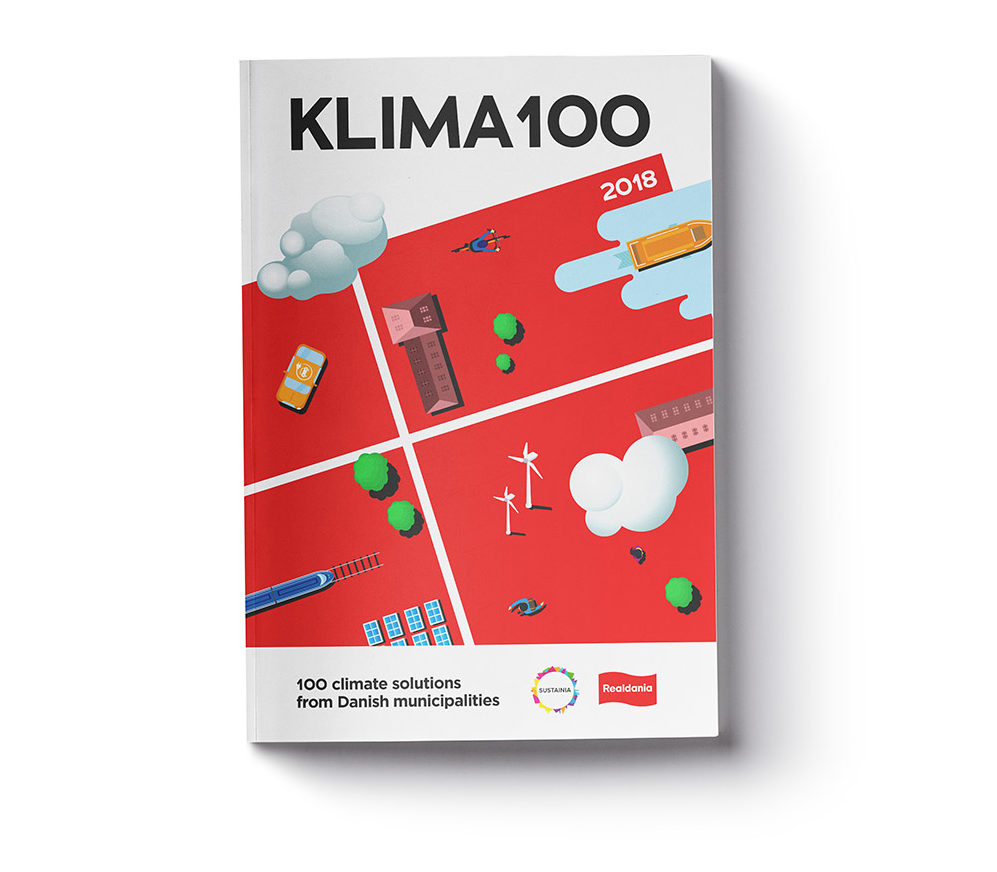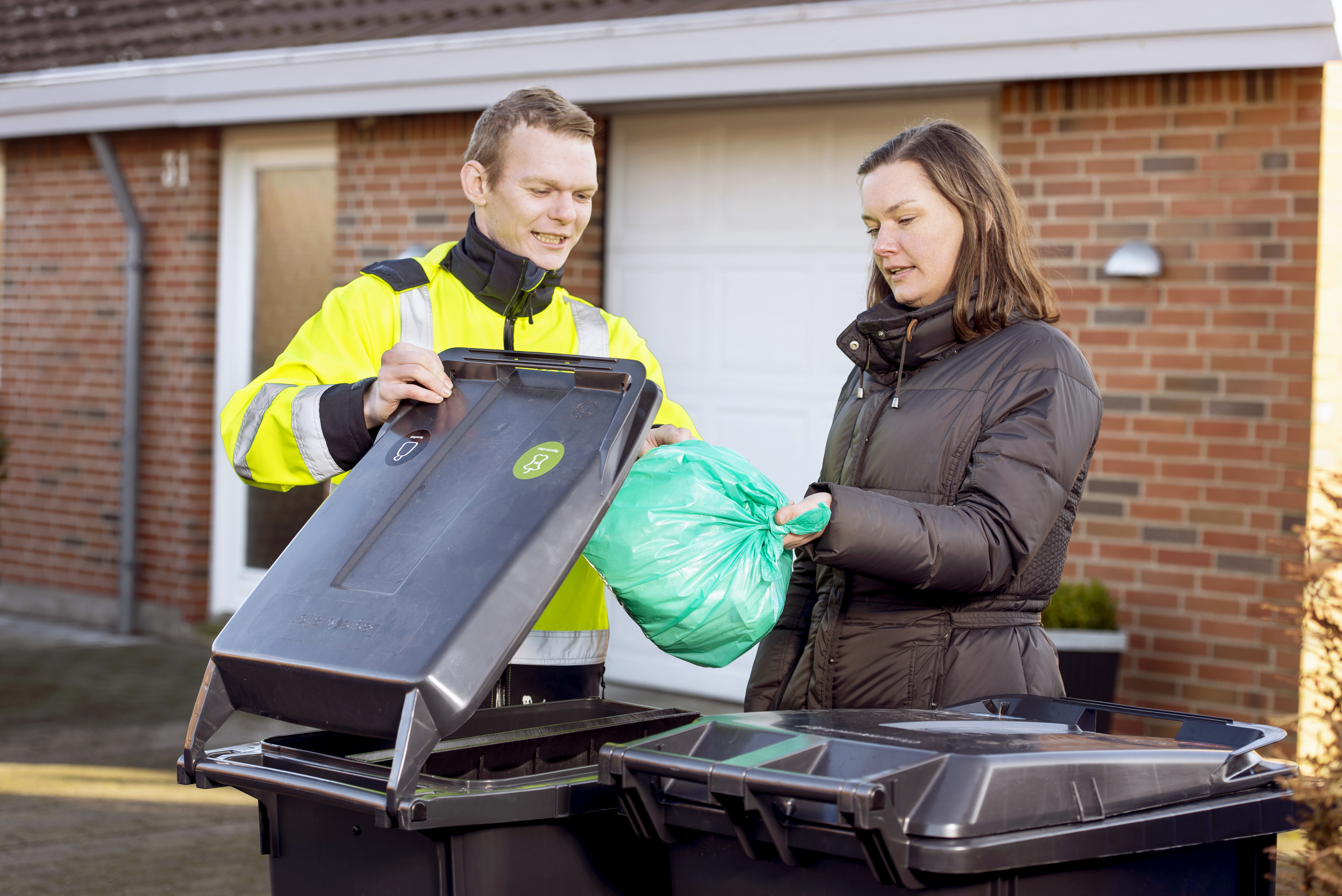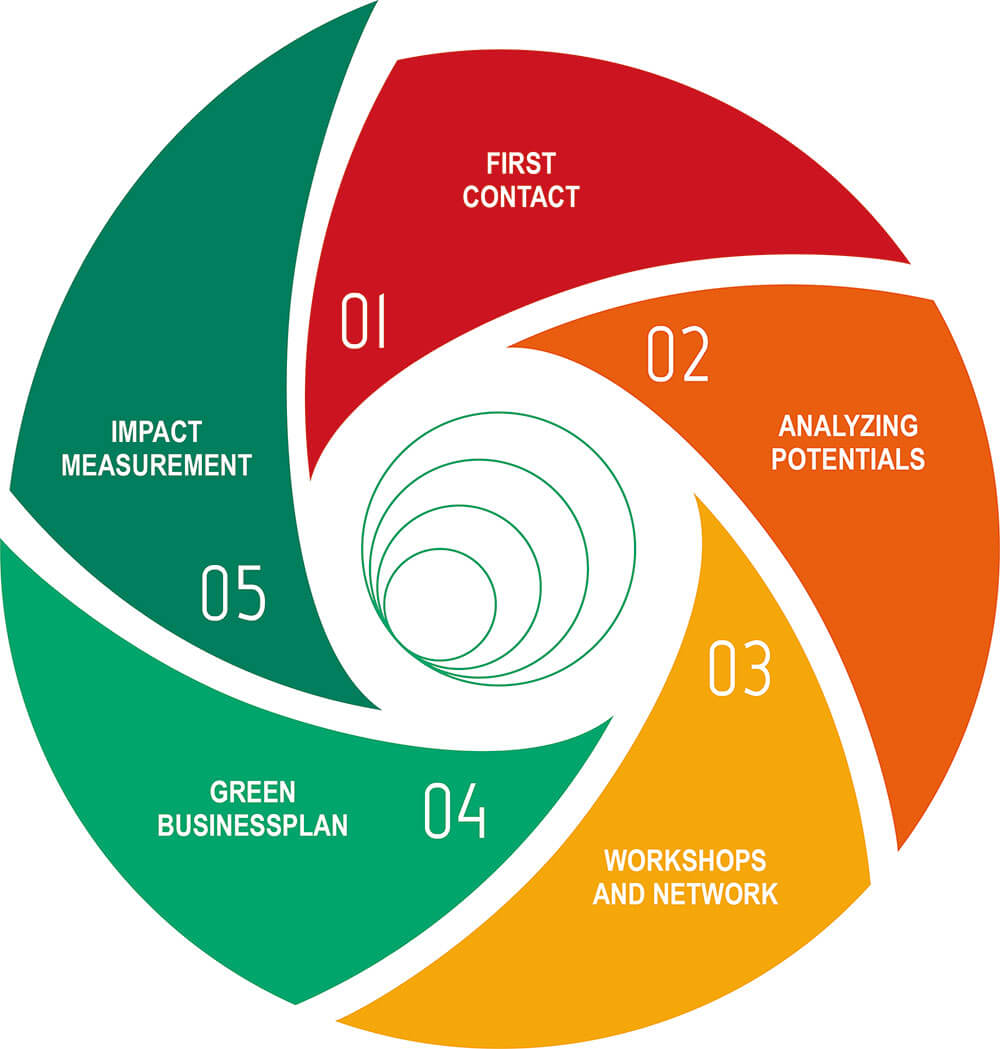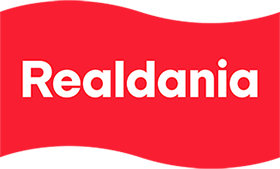Sponsored by Realdania
Local communities and municipalities pave the way for new circular technologies and business opportunities, as the publication Klima100 demonstrates.
The report KLIMA100, published by Sustainia and leading Nordic philanthropic foundation Realdania, clearly shows how new circular technologies and solutions can help ensure better use of resources and support the development of new sustainable business models and growth possibilities.

3 Solutions Picked by the Editors
1. Aalborg gets rid of throwaway culture
Under the collaborative program Circular North Jutland, Aalborg has launched a number of innovative projects focusing on circular economy and use of resources
With Circular North Jutland, Aalborg is aiming to be a circular municipality. Through the many initiatives involving both children and adults, as well as large and small businesses, the municipality has already reaped huge climate benefits. As part of the green procurement policy, the municipality has set new standards for procurement in schools. Instead of discarding old furniture, there are now standards in place for furnishing classrooms with a mix of new and refurbished furniture.
On the business side, Aalborg has been driving sustainable business development with a particular focus on plastic as a recyclable resource for companies. Among other activities, it reaches out to small and medium-sized enterprises by making energy and resource plans for 100 companies. These plans enable companies to reduce energy consumption and ensure better use of resources, raw materials and waste. Municipal projects on resource and energy efficiency have reduced 57,500 tonnes of CO2 emissions. Further reductions were made possible by reduced waste transport and less waste from schools and companies.

Sustainable Development Goals addressed
![]()
![]()
![]()
SDG #8 “Decent Work and Economic Growth”
Waste remains in the circular loop, giving rise to new job opportunities. In North Jutland, the green goods and services sector – including the circular economy sector – creates 8,500 full-time jobs
SDG #9 “Industry, Innovation and Infrastructure”
The program drives innovation and development among companies in North Jutland by offering resources and knowledge, and fostering new collaborations.
SDG #17 “Partnerships for the Goals”
Bikes are second only to walking in terms of CO2 emissions and resource consumption, so replacing car journeys with bicycles can help cut emissions from the transport sector.
2. In Vejle, waste gets sorted like never before
In just two years, a new waste strategy has brought Vejle Municipality to the forefront of household waste recycling.
With the introduction of a new waste scheme, the municipality has made light work of sorting household waste. These changes are taking place not only in households but in the public domain, where sorting garbage cans have been installed. Additionally, the municipality has introduced garbage trucks that run on biogas. The new waste collection system has shown significant results. Today, citizens of the municipality sort approximately 81% of the 125 kg food waste that each Dane is said to produce annually. Since the introduction of the waste scheme, the amount of organic waste collected has increased by 180%, paper and cardboard by 19%, and plastic by 25%.
Vejle has received great interest in the project from other municipalities, businesses and interest organizations. In particular, citizens’ support of the project has attracted interest and curiosity. One key reason for this support is the municipality’s close dialogue and cooperation with citizens and companies, as well as homeowners and the homeowners’ association. Additionally, the municipality has conducted major campaigns and disseminated information through events, public meetings, brochures, local press, social media and a temporary call center.

Sustainable Development Goals addressed
SDG #3 “Good Health and Well-Being”
The garbage trucks, which are running on biogas, save 700 tonnes of diesel a year. They also improve air quality by reducing toxic particle emissions, benefiting everyone’s health.
SDG #4 “Quality Education”
The municipality has entered into a collaboration with Ecolarium, a knowledge center and experimentarium which, through exhibitions and events, informs children and young people about the importance of waste sorting.
SDG #12 “Responsible Consumption and Production”
In 2015, Vejle Municipality’s household waste recycling rate was 41%. Today, it is 61%, already exceeding the national target of 50% recycling in 2022.
3. Municipal Collaboration* – Sustainable business models lead the way
The “Sustainable Bottom Line” project helps local businesses to boost the green transition and improve their competitiveness.
*Allerød, København, Fredensborg & Frederikssund municipalities
The Sustainable Bottom Line project (Bæredygtig Bundlinje) gives small and medium-sized enterprises in the Capital Region the chance to develop a green business model which enhances energy and resource effi ciency, competitiveness and boosts the bottom line. Throughout the project, companies are offered a structured process with potential analysis, consultancy and process support, culminating in a green business model. This gives smaller companies, who do not have the capacity to develop green business models on their own, the opportunity to work systematically with sustainable business development.
Sustainable Bottom Line is a collaboration between the municipality and each company, creating value for both parties. While the companies experience the direct benefi ts of the project, their reduced CO2 emissions and resource consumption also provide a positive eff ect on the municipalities climate and waste targets and green business development. In the first half of 2018, 88 companies were part of the project, and the goal is to develop a total of 100 green business models by 2019. This is equivalent to a reduction of companies’ material consumption by approximately 2,500 tonnes and a cut in CO2 emissions by approx. 5,000 tonnes.

Sustainable Development Goals addressed
SDG #7 “Affordable and Clean Energy”
Sustainable Bottom Line contributes to energy effi ciency in companies and supports the transition to renewable energy through energy assessments and guidance on better utilization of raw materials.
SDG #12 “Responsible Consumption and Production”
The project helps to map possibilities for recycling materials, such as upcycling, so that resources can be reintegrated into the economic cycle
SDG #17 “Partnerships for the Goals”
Core to the project is the vested cooperation between companies and the municipalities, as well as their joint work to underline resource effi ciency in business strategies.
This article was unlocked by Realdania, so that you could read it for free.


